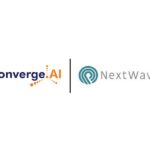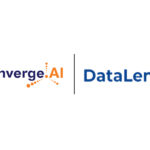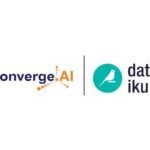
Moving Past the RPA and Agentic AI Debate
For over a decade, Robotic Process Automation (RPA) has revolutionized enterprise operations by automating repetitive and rule-based tasks at scale. We have all heard about the likes of UiPath, Blue Prism, and Automation Anywhere assisting enterprises in speeding up back-office tasks by replicating human actions. But what happens when processes get complex? For a long time, these traditional bots lacked context, adaptability, and flexibility. But Agentic AI is changing this by bringing an intelligent approach to automation, powered by LLMs, memory, planning capabilities, and tool integration.
The RPA-to-Agentic AI Evolution
RPA worked great when tasks followed predictable rule-based patterns like processing invoices, entering data, or sorting emails. These bots worked but only in stable environments. Change one button on a screen or tweak the business logic, and the automation would break. Engineers spent hours getting it back on track.
Agentic AI is built on LLMs like GPT-4 and integrates tools like SAP connectors, OCR engines, and vector databases. These agents orchestrate actions rather than simply replicate steps. Instead of coding 100+ rules for a three-way invoice match, an AI agent can read documents from emails, SAP, and gate logs, by leveraging planning frameworks like ReAct and Toolformer, Agentic AI can simulate goal understanding and take multi-step actions—though many applications still benefit from oversight and iterative refinement. The result? Less fragility, more adaptability. Does it make sense for organizations heavily invested in UiPath and Automation Anywhere to move to Agentic AI? Well, not in all cases (it really depends on your goals and use cases). It’s less about replacing bots and more about rethinking process design, ROI, and long-term automation. While Agentic AI introduces broader decision-making and adaptability, RPA still excels in stable, high-volume, rule-based scenarios with predictable outcomes.
A Broad Level Agentic AI vs Traditional RPA Comparison

Modern and newer enterprises can skip the old-school automation phase any maybe think of jumping straight to Agentic AI goal-driven and flexible strategy from day one.
A good real-world example: In a typical supply chain flow, a retailer places an order that’s recorded in SAP, while the warehouse runs on a separate system. RPA relies on a set of rules, scripts, and manual checks. But Agentic AI? Agentic AI can autonomously navigate data from diverse systems, provided the environment is properly orchestrated with APIs, memory, and safety mechanisms in place.
Powered by LLMs, vector memory, APIs, and smart prompting, we simulate and test agents in safe environments before going live.
For organizations already invested in RPA, think about simpler vs complex tasks and consider using both technologies together. RPA for repetitive tasks that follow the same steps every time, and Agentic AI for complex tasks that require intelligence and flexibility.
Top Industry Use Cases for Agentic AI (Based on Our Experience)
1. Factory 4.0 in Manufacturing: Our clients’ traditional RPA solution had static dashboards and scheduled checks. We built an AI-driven predictive maintenance system by integrating sensor data with ML, enabling real-time anomaly detection and smart multi-level alerts. A React-based dashboard and feedback loop ensures intuitive monitoring and continuous improvement.
2. Agentic AI in Contract Management: Agents not only read your legal and vendor contracts but also compare it with the business logic you have set and give you insights (or trigger an automated task).
3. Smart Loan Processing in Banking & Finance: Legacy RPA bots can struggle with static scripts and slow response. We built an Agentic AI chatbot for a leading NBFC that now handles consumer loan queries in real time, hence accelerating decision-making, improved accuracy, and turning inquiries into meaningful customer conversations.
Just like in manufacturing and fintech, Agentic AI can reshape industries like Customer service, Pharma, and Biotech. Imagine support agents that understand language, not just keywords. Or Pharma systems that auto-adapt to shifting compliance rules and customize packaging in real time. In Biotech, content engines learn from customer behavior and deliver tailored campaigns across markets.
Measuring ROI of Agentic AI in Automation
Let’s be honest—Agentic AI isn’t a plug-and-play tool. It demands upfront investment and often a shift in mindset. So, is it worth it? Absolutely. Value shows up in time and where it matters most. Below are a few metrics from our top projects.
- Efficiency
We automated repair data extraction for a real estate platform with 90%+ accuracy, cutting manual effort by 70% and saving ~$180K/year. - Speed
Deployment of a GenAI assistant for a top construction firm which reduced document retrieval time by 60% and accelerated project decisions. - Productivity
Streamlined loan eligibility for a fintech client, reducing processing time by 40% and saving ~$500K annually through lower drop-offs and faster approvals. - Quality
We enabled real-time monitoring for a manufacturing unit, cutting defective parts by 33% and saving $1M+ in scrap and rework.
Most companies begin small by automating one function and scaling as the results speak for themselves. What makes Agentic AI so powerful isn’t just what it does today. It’s that it learns, adapts, and keeps getting better.
If you would like to know more, download our ‘Agentic AI for Executives’ eBook to explore further. Click here












